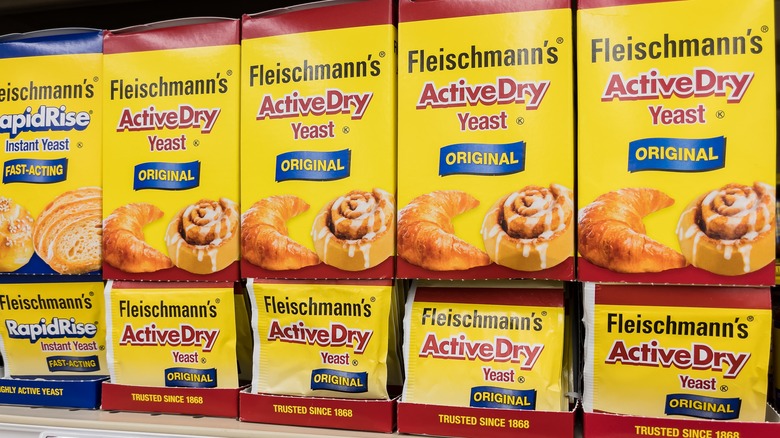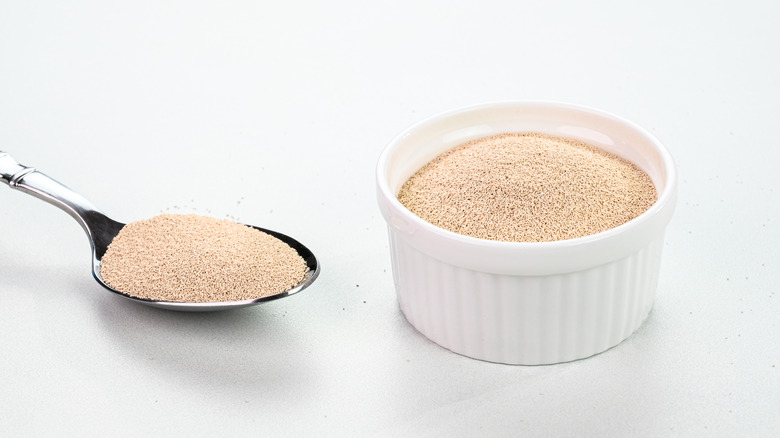The Difference Between Active Dry And Instant Yeast Explained
If you bake bread regularly, you've likely encountered both active dry yeast and instant yeast (or rapid-rise yeast) and wondered how they differ. Even if you're looking for baking tips for beginners, the yeast dilemma is easy to understand. Both come from the same strain of yeast but are processed differently, which affects how they behave in recipes.
Active dry yeast has larger granules and is slightly slower to dissolve. Traditionally, bakers were taught to proof it in warm water with sugar to activate it (and "prove" it was alive), but this step is usually considered to be optional. Proofing can still be helpful with older packets to ensure the yeast is viable before adding it to your dough. Instant yeast, however, can't be tested this way. You won't know if it's expired until your dough fails to rise. Active dry yeast ferments more slowly, so it's good for recipes with longer rise times, like sourdough. The slower process allows complex flavors to develop, creating a richer taste and texture.
Instant yeast, as its name suggests, is ready to work immediately. Its finer granules dissolve easily and don't need proofing, so you can add it directly to dry ingredients. This makes it ideal for quick recipes, like sandwich bread or pizza dough. Ultimately, your choice depends on timing and flavor. Active dry yeast is great for slower, flavor-driven recipes, while instant yeast is perfect when you need consistent, fast results. Both can make delicious bread when used correctly.
Choosing the right yeast
Active dry and instant yeast are remarkably similar and can be used interchangeably with minor adjustments. If a recipe calls for one and you only have the other, don't stress as it's easy to adapt. If swapping instant to active dry yeast, you'll simply have to allow more time for the dough to rise. For most recipes, the results will be nearly identical, and only the most seasoned of bakers may notice a difference.
However, certain recipes favor one yeast over the other. Active dry yeast can work better for doughs that need to be chilled, as instant yeast may not survive the cold environment. Similarly, for recipes that call for a double rise, you may get better results with active dry yeast, since the instant yeast may cause everything to rise more than intended the first time around. Active dry yeast excels in recipes that call for slow fermentation. For artisan breads or sourdough, where flavor is the focus, it offers a more gradual fermentation process that enhances complexity. For baking with bread machines, instant yeast is usually preferred for quicker proofing.
At the end of the day, the best yeast is the one you're most comfortable using. If you've always used one type of yeast and love the results, stick with it. Both freeze well for months and reliably produce delicious bread. For casual and seasoned bakers alike, the differences are subtle enough that you can confidently bake with whichever yeast you have on hand.

